
While covering the Iraq War, reporter Bob Wilton meets Special Forces officer Lyn Cassady who tells him that he was once a member of a US army unit trained in parapsychological skills including mind control, remote viewing, cloud bursting and passing through solid objects. The two friends’ ensuing misadventures are comical, absorbing and totally believable, thanks to the paranormal talents of the VFX team at CIS Hollywood.From Digital Media World Magazine
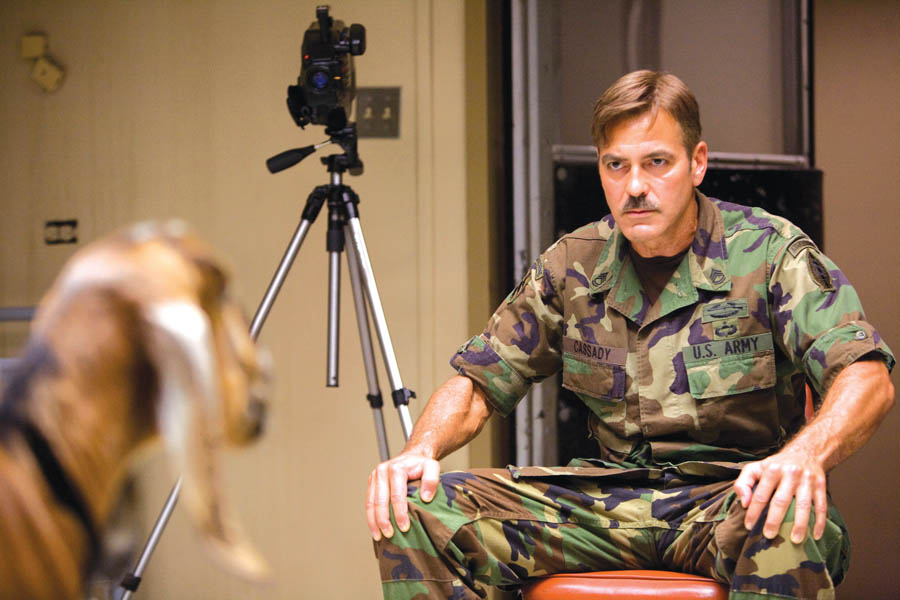 |
||
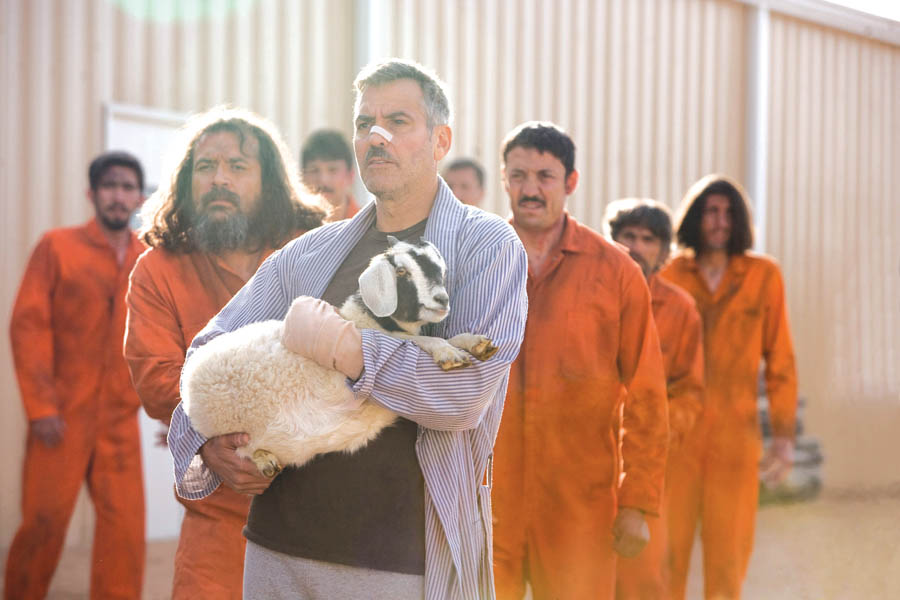 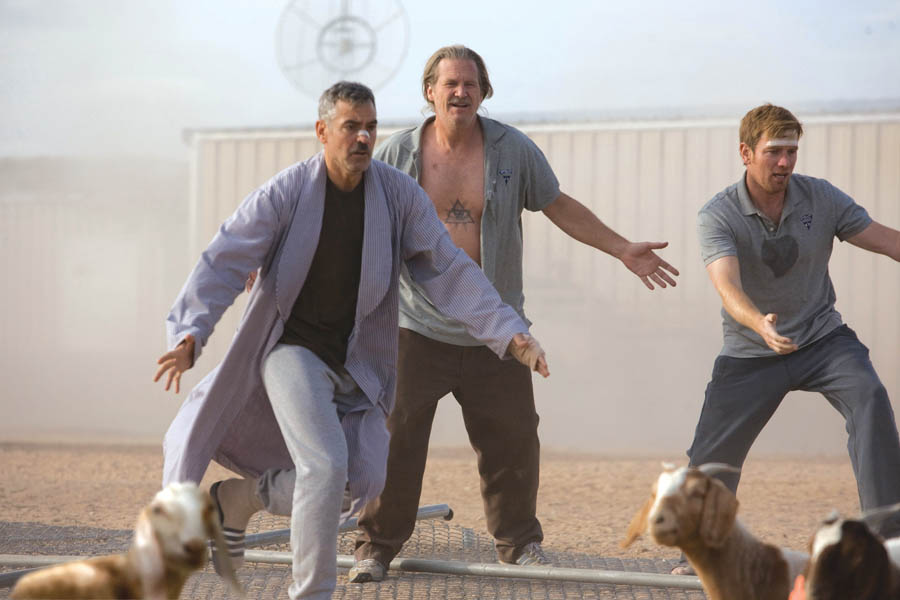 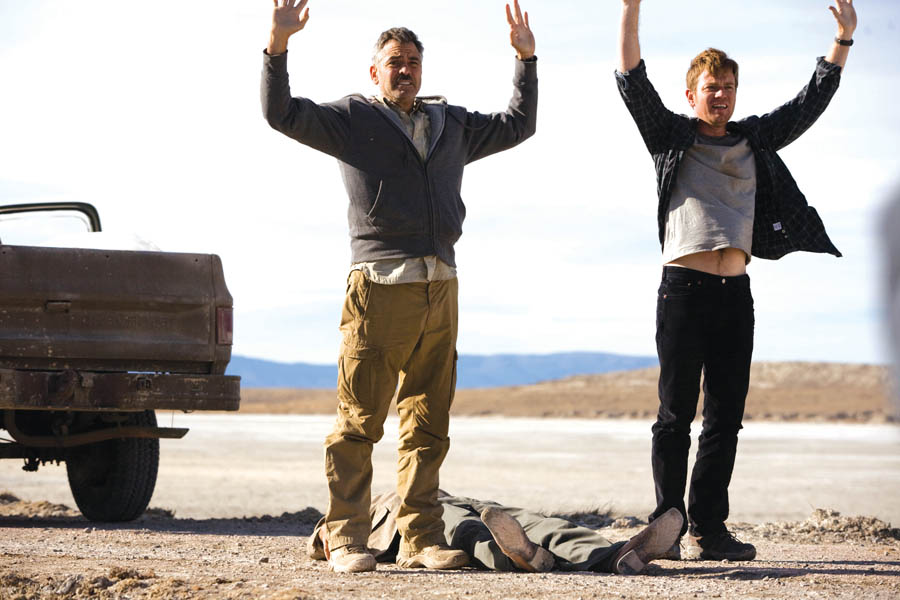 |
||
|
The team accomplished a wide variety of effects, although only a few of these actually portrayed psychic skills. The majority of their brief was for invisible types of effects and enhancements. A fair amount of CG work was needed to create realistic objects from animals and architectural elements to some period helicopters. Visual Effects Supervisor Tom Smith was involved in the early pre-production stage and scouting of locations. "This doesn't often happen, and I was pleased to be involved with the Director Grant Heslov from the very beginning. I was on set in Puerto Rico as well as New Mexico and Glamis Dunes in Southern California." Desert Crossing As Bob and Lyn drive along, Lyn demonstrates his ability to burst clouds. “The cloud bursting was based on still frame photographs that I shot while on location. We did a 2D morph in the Inferno with multiple layers moving against each other and dissipating over the course of two shots. We actually went thru a lot of iterations before settling on the version in the movie.” Eventually their car gets into an accident, which required fire and smoke augmentation, and as they set off on foot into the desert, Tom’s team carried out a major colour correction on the sand. "The shooting location at White Sands New Mexico has considerably lighter coloured sand than the Iraqi desert. We had the sand colour and skin tones for the sequence set by the director of photography Robert Elswit in the digital intermediate suite at EFILM. We then rotoscoped the foreground characters out of their plate and comped them into the sand colour-corrected plates. This proved to be challenging because if our rotoscope was less than 100 per cent accurate, we would see edges on the characters either turn lighter or darker.” CG Helicopters The team uses Maya and Renderman software in their pipeline, compositing in Shake, and a company called Yannix for all CG tracking. They finaled 95 shots for the show over eight months after production finished, with approximately 30 digital artists on board. Leap of Faith The team’s major sequence does demonstrate Lyn’s special abilities, and tests CIS Hollywood’s team at the same time, when at one point he is asked to stop a goat’s heart just by staring at it, causing it to die. Tom worked with his colleague, Joe Henke, to create a CG goat to blend with shots of a live goat. The task may sound relatively straightforward, though not easy, but the director was concerned that the scene should maintain the light-hearted mood of the whole movie and not frighten or worry the audience. This demanded careful timing and, of course, the goat also had to look completely real. Shave and a Haircut The goat’s fur was developed, created and groomed with a plug-in for Maya called Shave and a Haircut, compatible with their pipeline. The plug-in works with curves created with Maya’s own hair tools. The fur colour relied on Tom’s reference photos of the live-action goat, and the lighting was achieved with Maya's lighting tools and rendered in RenderMan. They took special care with the indirect lighting and shadows to match the environment, using RenderMan’s ray tracing and global illumination. The timing of the scene when the goat actually collapses was critical and had to be handled with keyframe animation. They used a cloth simulation for its floppy ears and paid close attention to showing how a real goat would fall if it suddenly and totally lost control of its muscles, and how hard it would hit the floor. The whole process was very labour-intensive both to develop and render. On Location Tom found this project was a great experience all around, and the crew and the locations generated a lot of good memories. “Shooting at the White Sands National Park in New Mexico was a highlight for me personally. It’s a very surreal, ever-changing place where the dunes can physically move up to 100 meters per year from the wind alone. One a day, large wind storm blew up, creating a complete white out of gypsum in the air. Spending a day out in the bright sun there can leave you feeling disoriented as your body tries to figure it all out, which is sort of the way movie ends up as the audience wonders, ‘Is this government work going on for real or not?’" Words: Adriene Hurst with Tom Smith |
||
  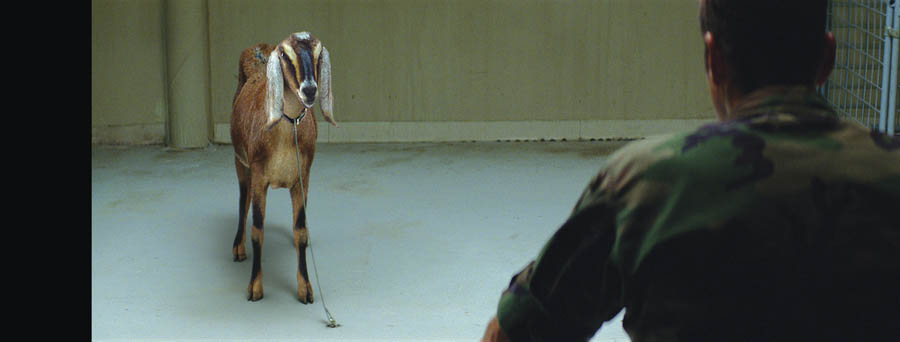 |
||
|


















